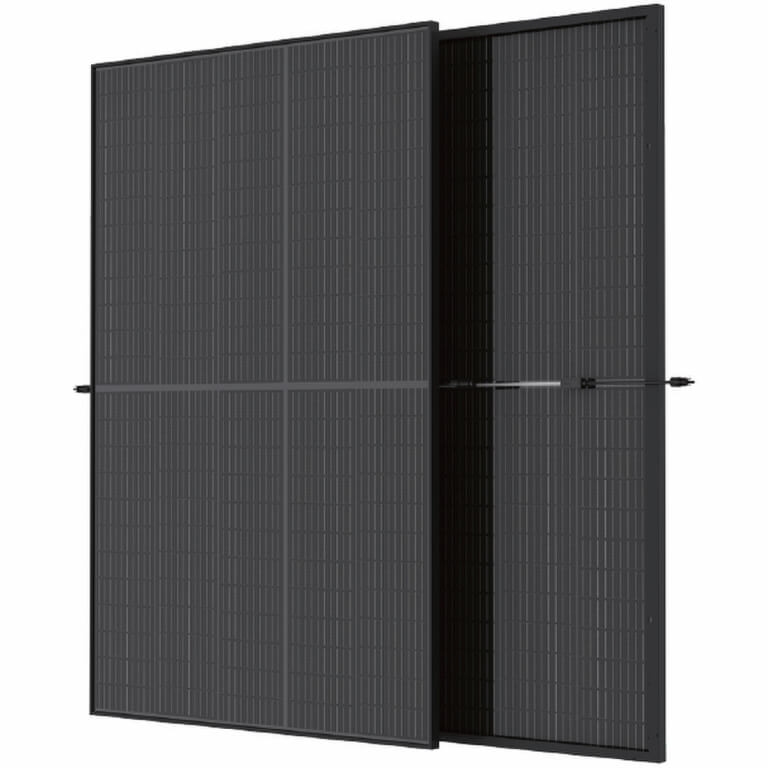They say there are two sides to every story.
At Sunhub, two-sided solar panels, also known as bifacial solar modules, have an interesting backstory. They also provide some distinct advantages over their cousins, the monofacial solar module. But does this mean they’re fit for every project?
Today we’re comparing bifacial solar modules to monofacial panels so you can decide which makes the most sense for you.
What is a bifacial solar module?
A bifacial solar module is a panel that contains two back-to-back layers of photovoltaic cells that absorb energy from the sun and use it to generate electricity. The vast majority of bifacial solar panels are made from silicon, a semiconductive material that both controls and manages the flow of electric current. Nearly all bifacial modules are monocrystalline or created from a single silicon crystal, though polycrystalline versions exist.

How do the modules work?
They work just like normal cells, except that they can absorb sunlight from both sides of the panel.
Because the cells are positioned on both sides of these panels, a bifacial solar module produces more solar power than a monofacial panel. While only one side of the module can access direct sunlight at a time, photovoltaic cells can also harvest indirect sunlight.
This technology has proven 10-20% more efficient than monofacial panels in studies.
Origin Story
Bifacial solar cells were proposed in theory in 1960 by the Japanese company Hayakawa Electric Industry Co, Ltd. The Russian space program first employed the cells during the 1970s in their Salyut 3 and Salyut 5 space stations. In 1981, the first bifacial solar manufacturer Isofoton was founded in Malaga, Spain. That company would run successfully into the mid-2010s when Chinese manufacturers that could undercut its pricing supplanted it.
Advantages
Efficiency and cost-effectiveness are the primary calling cards of the bifacial solar panel. By using bifacial solar panels instead of traditional single-sided panels, businesses can generate more energy per square foot than single-sided panels. Bifacial solar modules tend to be more durable than conventional single-sided models, meaning fewer repairs down the line. Finally, using bifacial solar modules helps businesses minimize their carbon footprint by utilizing a renewable energy source instead of relying on fossil fuels like coal or natural gas.
Downsides
While Bifacial modules have tested up to 10-20% more efficiently than monofacial modules, they have higher dollar-per-watt and upfront installation costs. When levelized cost of electricity (LCOE) is considered, bifacial modules still outperform monofacial modules. Here’s a helpful LCOE calculator to use as you work on your solar project.
How and where to use them
Bifacial modules are best suited for commercial and utility-scale projects. However, they’ve also done well as awnings and over pools. Anywhere they have access to both direct and indirect sunlight.
Future Outlook
The global bifacial solar industry is projected to grow to $31.1 billion by 2031. Europe currently accounts for the largest bifacial solar module market share, followed by North-American and the Asia-Pacific regions.
Industrial applications will significantly contribute to the market influx, with commercial sectors closely behind.
At the end of 2022, the U.S. Department of Energy’s solar analysis found that building and maintaining a solar plant has never been more affordable. As plants continue to pop up in the U.S., the demand for monofacial panels should increase. In the solar industry, the higher the demand, the lower the prices.
If all follows in line, prices should continue to go down for bifacial modules, and they should gain a significant market share in the future.
The bright idea
Bifacial solar modules offer numerous benefits to business owners looking to reduce their energy costs. Bifacial solar modules provide greater efficiency and durability than traditional single-sided models, allowing businesses to generate more energy per square foot with fewer panels.
They have a higher dollar per watt and upfront cost, making less expensive monofacial panels more appealing. However, global market trends indicate that prices will continue dropping as demand increases for bifacial modules.
Contact our sales team to discuss whether investing in bifacial modules makes sense for you.

